We live in an age where nation-building is considered a hopeless fantasy. These things only pull apart, we’re told. When the prevailing ethos is to “move fast and break stuff”, no one has much patience for picking up the pieces.
Around the world, this historical moment seems to be one of separatism, secession, and self-interest. We’re often reminded that the recipe for making an omelette involves breaking a few eggs. But apparently none of the king’s men can be bothered with trying to pull Humpty Dumpty back together.
In many ways, it’s hard to conceive of a country more inherently divided than Italy. It’s not just that people are split by politics and economics, but also by geography, history, food, dialect, calcio—you name it. There are more than 10 different political parties represented in the Italian and European parliament. Getting a consensus on anything in Italy is about as difficult as agreeing on a paint color at a New York coop meeting.
So it’s something of a modern miracle that the nation of Italy exists at all. That it’s become not only a functioning country but a symbol of la dolce vita, a sun and spritz-soaked lifestyle brand revered around the world, would probably have its 19th century founders shaking their heads in wonder.
Last Sunday, C and I took the train from Rome to Turin, a four hour study in the cultural contrasts across the heartland of Italy. From our window, the countryside unspooled like a motion picture at 160 miles per hour— the satellite dishes and antennas atop the Roman apartment buildings soon giving way to Tuscany’s manicured hills, with their flanks of cypress trees that stand like soldiers at attention. As we entered Emilia-Romagna, the cypress gave way to the tall, thin poplars, bare this time of year, and plains of industrial farms and logistic centers. From the graffitied, unrepentant urbanism of Milan, we rolled through the swampy flatlands at the foot of the Alps and into Turin.
There are 7,918 towns, 270 borghi, 6 seas, 3 mountain ranges and some pretty well-known volcanoes in Italy, all packed into a land mass roughly half the size of Texas. It’s simultaneously accessible, at least on a high-speed train, and inexhaustible. Not surprisingly, it’s also pretty tough to manage.
While you’re sitting in a comfortable Italo car, it’s easy to forget that this nation is a relatively new construct. For much of its storied history, the Italian territory was an almost absurd concoction of duchies and fiefdoms and nation states, frequently at war with one another and the world. The family reunion from hell.
Consequently, the general population lived with the constant risk of political upheaval and, after the boom times of the Renaissance, precious little economic growth . By the mid-1800’s, the average life span here was under 30. The economy was still largely agrarian and dominated by a self-perpetuating feudal system. The majority of the country was illiterate.
As it happens, Turin was the city where it began to turn around. “Now you are in the true capital of Italy,” the waiter told me at dinner that night, as he reverently poured the Barolo. I thought he was just taking the opportunity to throw some shade at Rome. But he was right.
The movement for Italian unification was born both philosophically and politically in the prosperous hills of Piemonte, and when the Kingdom of Italy was proclaimed in 1861, the seat of government was established in Turin. In fact, Rome was not even part of the Kingdom at that point. It wasn’t until almost a decade later that the “Rome Question”, a dispute between the Catholic church and the Italian state, was finally resolved.
Testaments to Turin’s place in Italian history abound in the city’s elegantly proportioned central squares. Banners remind bored school kids on field trips that what is now the Museo di Risorgimento was once the first presidential palace. Nearby, the Palazzo Madama with its majestic staircase (because what is unification if not an endlessly uphill climb?) is denoted as the original seat of Italian Parliament, where Vittorio Emmanuel II was proclaimed the country’s first king. But as I wandered under the nave-like loggias near the piazza Carlo Alberto, I came upon a monument I liked even better than the statues with the raised swords or the imperial palaces.
There’s a sign—an advertisement really—outside the Caffè Fiorio that shows a stiffly posed man clutching a gelato, along with the following text:
Camillo Benso Count of Cavour was a key figure in the Italian unification from the mid-19th century. Day after day, he imagined the future of the Italian people, sipping his cup of coffee at the Caffè Fiori premises in Turin.
Of course, Cavour did more than imagine. Born in 1810 to a noble family, he was an agricultural innovator (one of the first champions of the region’s prized Nebbiolo grape), an entrepreneur, and eventually the Prime Minister of the Kingdom of Sardinia and Piemonte. Through his whirlwind of a life, he sought to connect people: building railways and canals, starting newspapers, and relentlessly advocating for a united Italy.
When his vision for the country was finally realized in 1861, he became Italy’s first Prime Minister, still working only steps away from Caffè Fiorio. He died just three months after being appointed.
There is no shortage of monuments to Cavour, not only in Turin but across the country. But the image that will stick with me is of this bearded man sipping his coffee or eating a gelato at the bar. What better place could there be for the country of Italy to be conceived?
Two weeks ago, on March 17, the nation celebrated the 164th Anniversary of the Unification of Italy. Like almost every other European and North American democracy at the moment, the country is knee-deep in division: tensions are high between international allies, the political left and right, the North and South of the country. There are calls for separation, restrictions on the free press, and efforts to rid the country of outside influences.
And yet, the nation endures, most likely because it just makes fundamental sense. To the outsider eyes of an American, it’s hard to imagine how a fragmented set of city states could have ever achieved the international prominence of contemporary Italy. It’s not an argument for uniformity— which is hardly a danger in this country. There’s a difference after all between banding together and being forced into line. It’s merely to note that there are some things that can only be accomplished by large groups of people working in concert.
So I was happy to stop in and grab a coffee at Fiorio to celebrate the unity of this remarkable nation, where one can go from the ancient grandeur of Rome to the majesty of the Alps in an afternoon. While I was there, I said a quiet prayer it would find more leaders like Cavour, who spend their day imagining ways to bring people together rather than driving them apart.
Then I wished the same for my own country.
“Divide and rule, a sound motto. Unite and lead, a better one.” Goethe

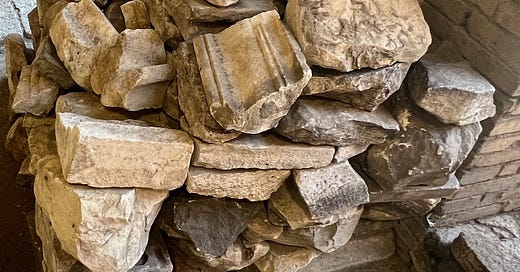



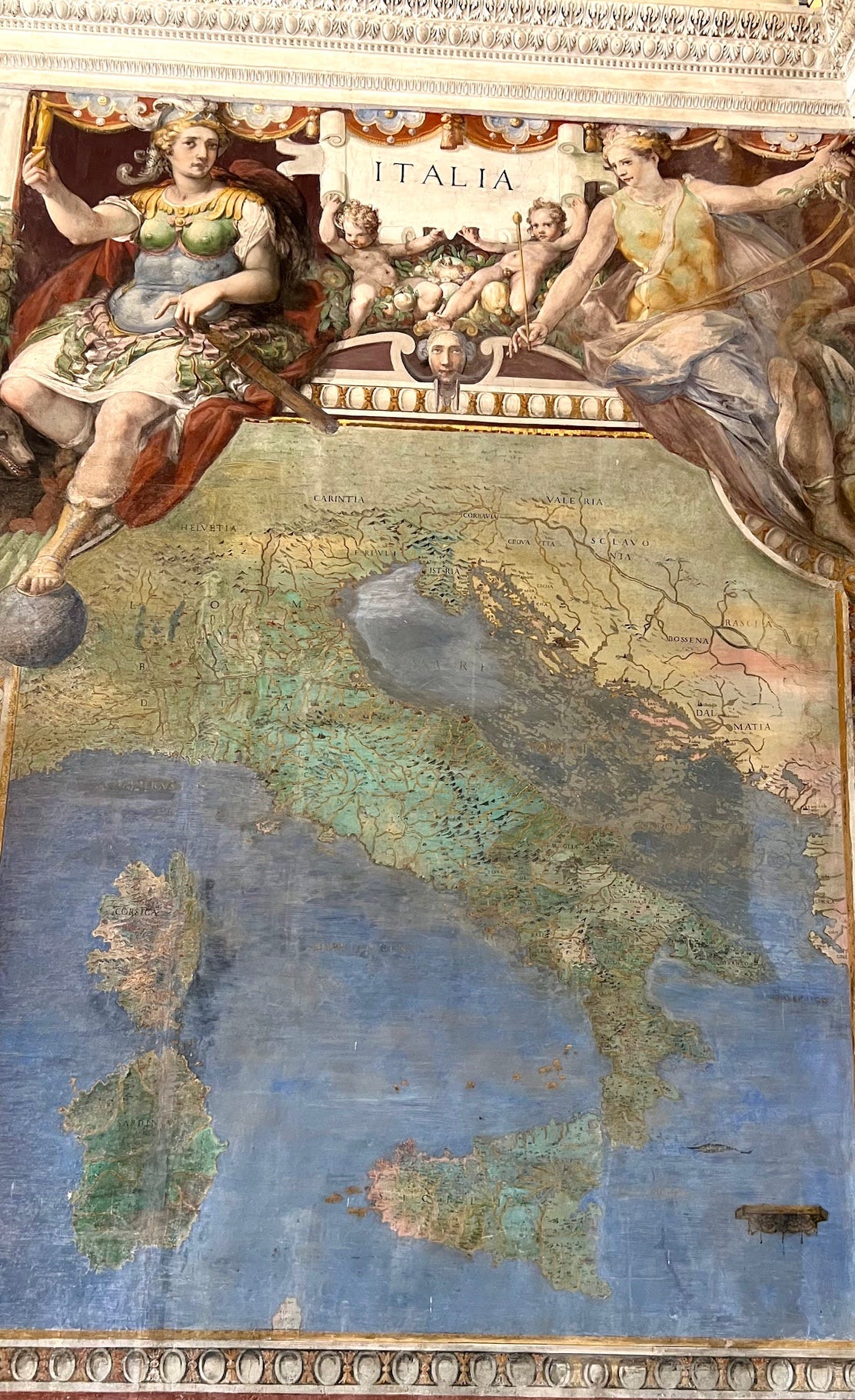

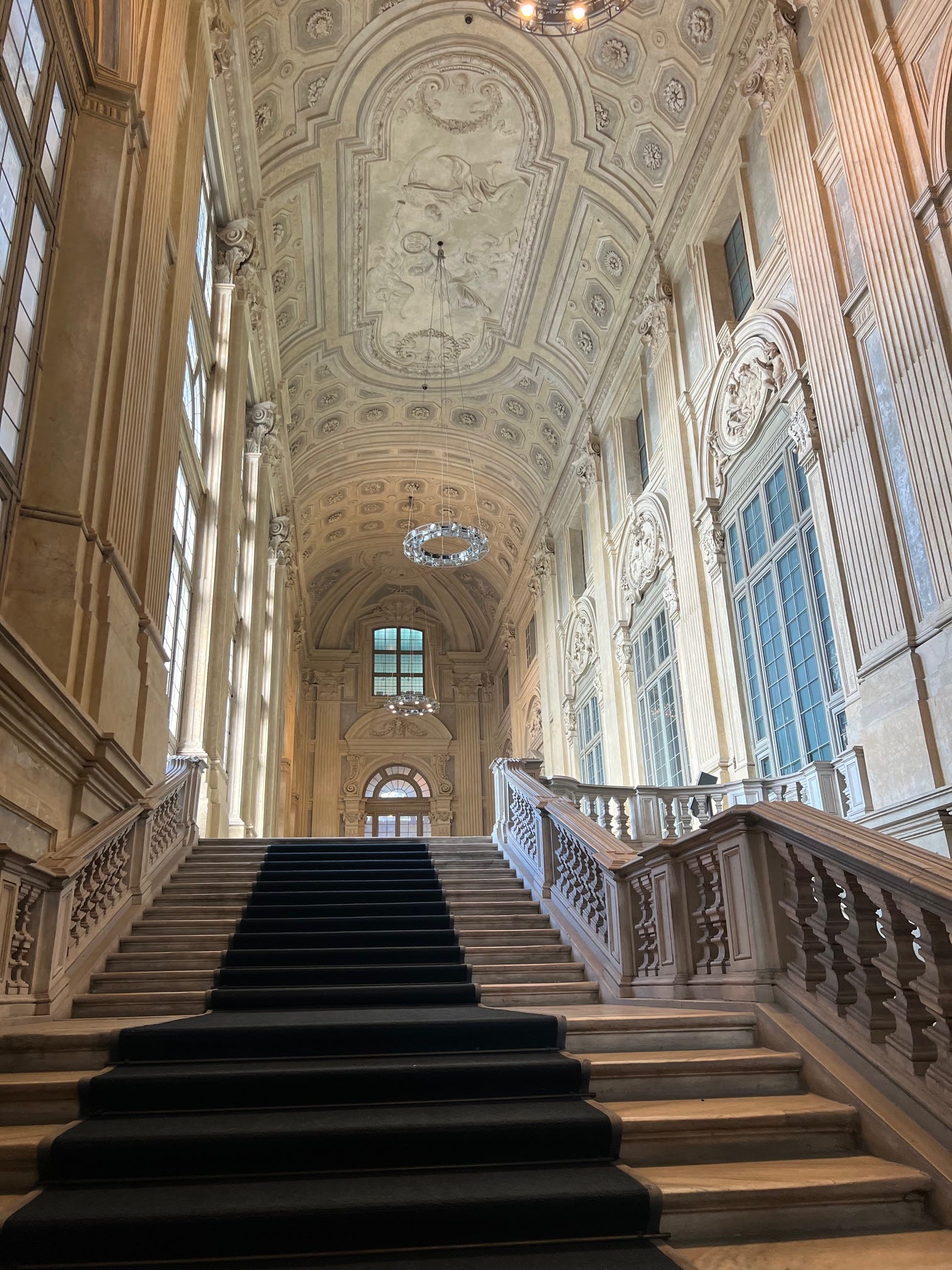
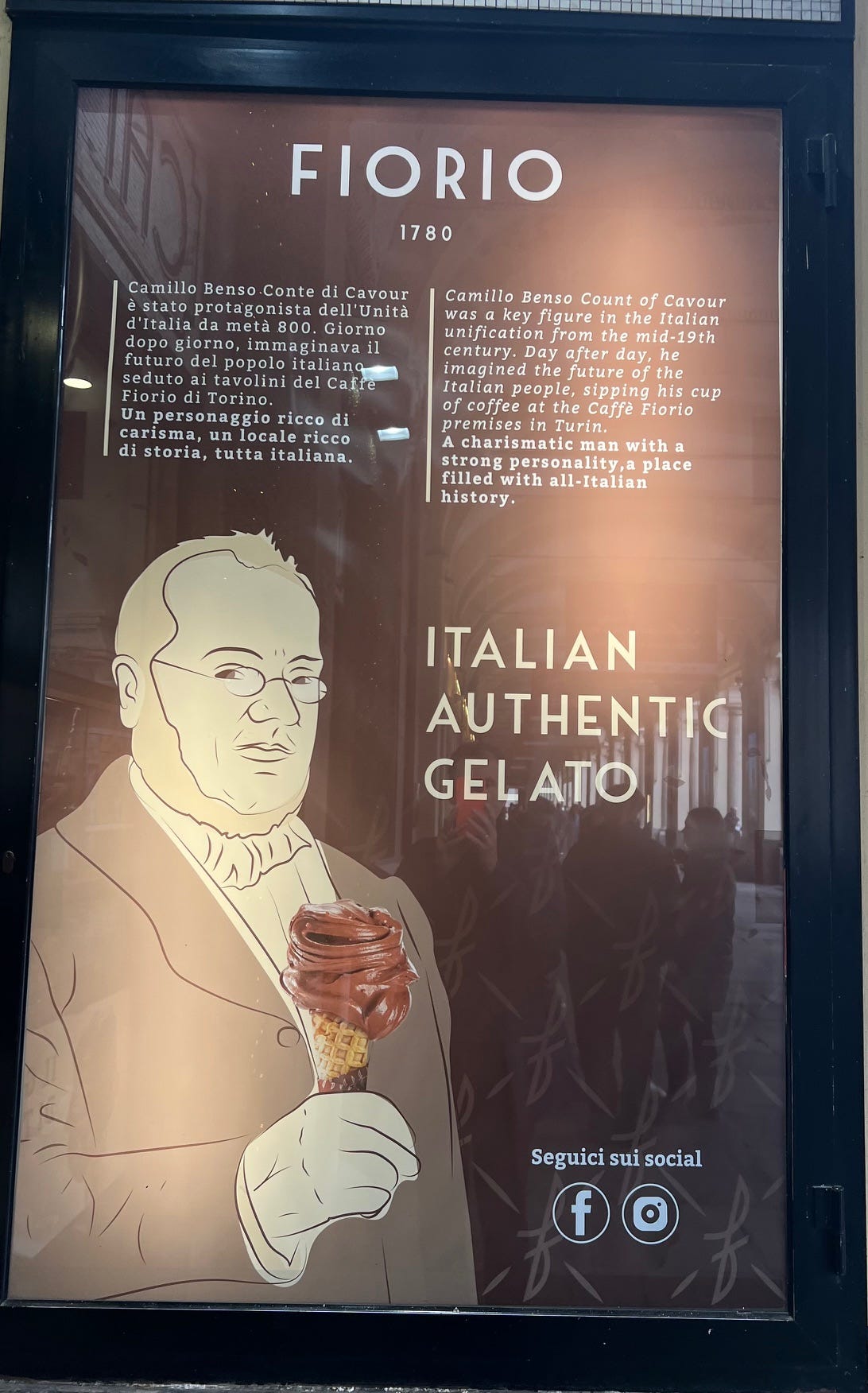

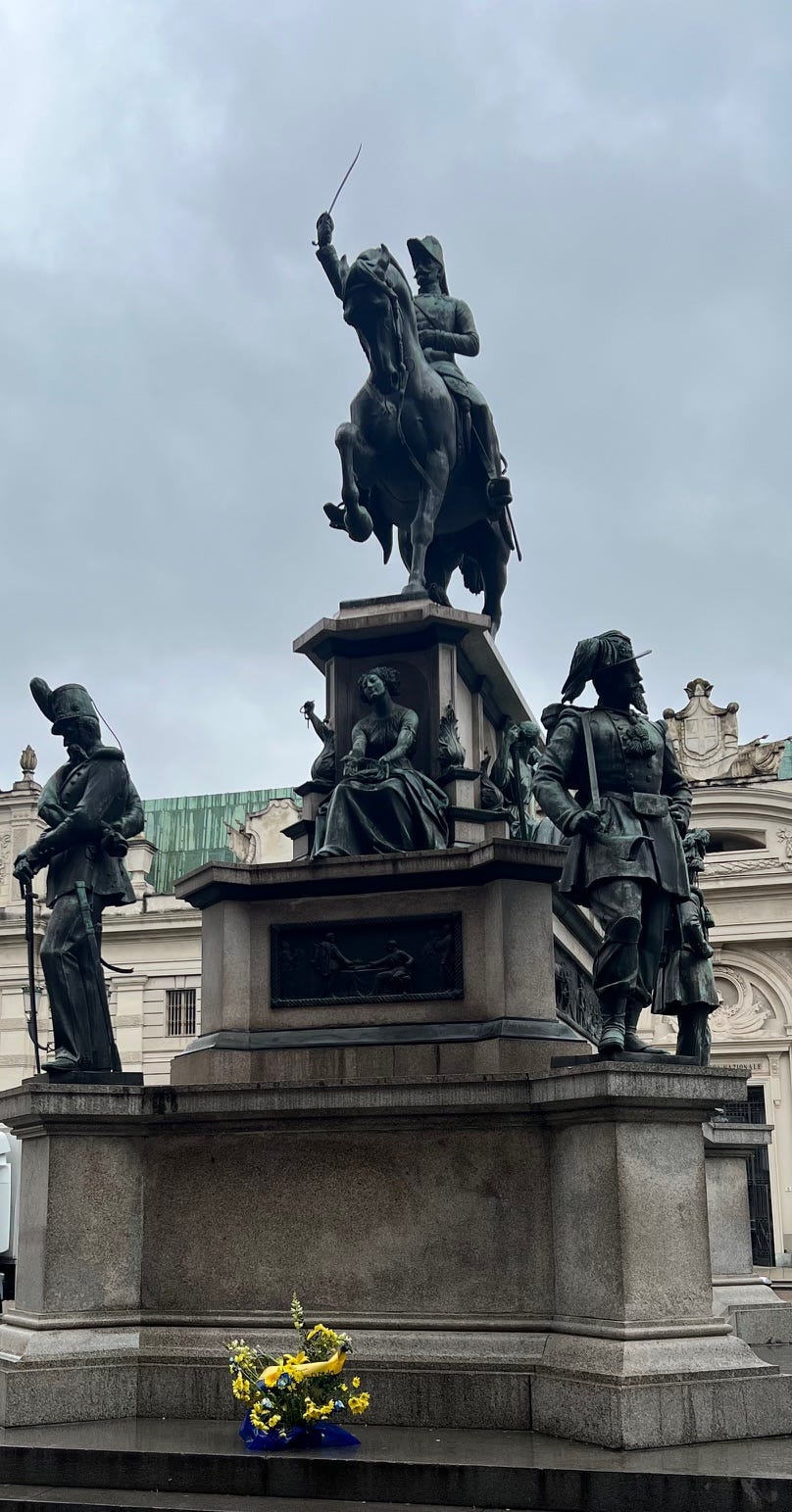
Thanks so much!! I think it probably is the cafe that had his special table, but I had no idea there was a special mirror to go with it! That sounds like a story in and of itself. And I only just learned about the Irish and English involvement. Had a very emotional comment from a Southern Italian who saw the entire Risorgimento in a very negative light, and she mentioned the English involvement in support of Garibaldi. I realized I don't know nearly enough about 19th century Italy-- is there a book (English-language I'm afraid) that you recommend as a good starting point? Thanks so much for taking time to comment-- so appreciate your support!
Genuinely appreciate you sharing this, as well as the translation. While I don't agree fully with your interpretation (to be honest, I struggle to see how Southern Italy on its own would have weathered the economic changes, wars, etc. of the 20th and 21st century), I think your primary point is that I put forward a facile and incomplete picture of the Risorgimento, both its motivations and consequences. In that respect, I think your criticism is well-taken. In the interest of making a different point and doing it in a brief and readable way, I simplified a very complex subject in an unbalanced. way. My apologies.